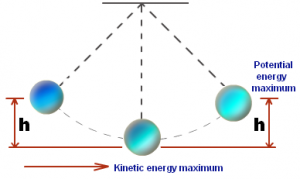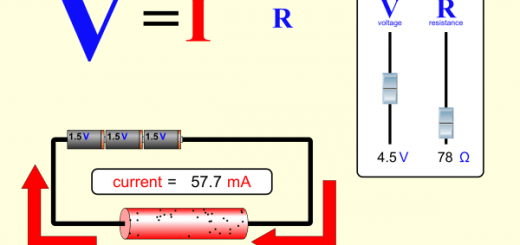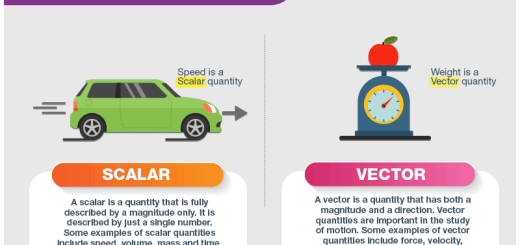Law of Conservation of mechanical energy in everyday life
The energy is the capacity to do work , There are different forms of energy that can be converted into one another , Such as in the waterfall , The potential energy is converted into kinetic energy , The electrical energy is converted in the electric bulb into heat and light energies .
Chemical energy stored in coal , gasoline and other types of fuel is converted on burning into heat energy then mechanical work that is used by means of transportation such as cars and trains .
On converting energy from one form into another , the amount of energy remains constant , This is known as the law of conservation of energy .
Law of conservation of energy : Energy is neither created nor destroyed , but it can be converted from one form into another .
Law of conservation of mechanical energy
Assume that an object of mass ( m ) is projected vertically upwards from point ( 1 ) at initial velocity ( vi ) to reach point ( 2 ) at final velocity (vf) , the work done on the object while rising leads to :
- An increase in the potential energy of the object with height .
- A decrease in the kinetic energy of the object due to a decrease in its velocity .
According to the third equation of motion : vf² − vi² = 2 a d
Since the object moves upwards against gravity , it decelerates uniformly .
a =− g ∴ vf² − vi² = 2 (− g ) d multiply ( ½ m )
½ m ( vf² − vi² ) = − m g d , d = yf − yi
½ m ( vf² − vi² ) = − m g ( yf − yi )
½ m vf² − ½ m vi² = − m g yf + m g yi
m g yf + ½ m vf² = m g yi + ½ m vi²
PEf + KEf = PEi + KEi
This means that : The sum of potential energy and kinetic energy at point ( 1 ) = The sum of potential energy and kinetic energy at point ( 2 ) .
The sum of potential energy and kinetic energy of an object at any point on its path under the effect of gravity only = constant .
The increase in the kinetic energy of a falling object will be on the expense of its potential energy , potential energy decreases and vice versa .
The mechanical energy : It is the sum of potential energy and kinetic energy of an object , Mechanical energy ( M E ) = P E + K E .
Law of conservation of mechanical energy : The sum of potential energy and kinetic energy of an object at any point on its path under the effect of gravity only is constant .
Law of conservation of energy in everyday life
There are many examples of mutual transformation between potential energy and kinetic energy , like :
The roller coaster acquires the maximum potential energy at the top which is then converted into kinetic energy on falling.
When flinging arrows, potential energy is stored in the string and bow and then converted into kinetic energy when the string is released .
In the pole vault, potential energy is stored in the pole and then converted into kinetic energy .
Projecting an object upwards: When a ball is thrown from the ground upwards, the potential energy of the ball is zero at the ground , while kinetic energy is maximum .
As the ball rises , its potential energy increases and its kinetic energy decreases , Potential energy reaches its maximum value at the height point reached by the ball where its kinetic energy = zero .
When the ball starts to fall to the ground , its kinetic energy increases gradually , while its potential energy decreases.
When the ball reaches the ground , the potential energy becomes zero at the ground while kinetic energy becomes maximum.
Energy resources & forms, Potential energy, Kinetic energy & Mechanical energy
Potential energy, Kinetic energy & Law of conservation of mechanical energy




